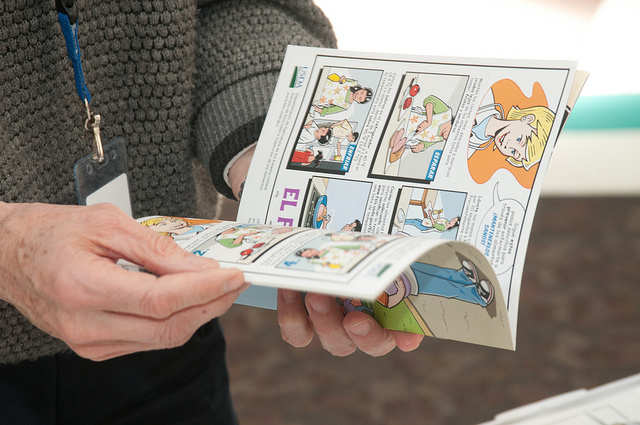Although editing might seem straightforward, there is a greater difference between traditional editing done for novels and written work than editing for comics than one might think.
A traditional editor comes in two forms, a copyeditor or a developmental editor. A copyeditor works on detailed line level changes, like punctuation and grammar. They also do fact-checking and detailed spell-checking. A developmental editor works on bigger picture things like plot and characterization. For traditional publishing, an editor can either work directly for the press, like we do here at Ooligan, or they can be freelancers hired by the author or a smaller publisher. An editor usually works directly with the author on their manuscript to make it the best it can be for publication.
A comics editor works not only with the writer of the comic’s script but the entire comics team as well. Comics editors act as a go-between for the main players in comics production—the publisher, the writer, the artist (also known as the penciller or cartoonist), the inker, the letterer, and the colorist. The publisher (like any other publisher) tries to put out the best content possible for their brand. A comics editor usually works for the publisher. The writer, as mentioned above, is in charge of writing the scripts for the characters. These scripts are exclusively for the artist drawing the book. It’s the editor’s job to see that what is written in the script gets put on the page by the artist. They check with the publisher to help flag any changes that might need to be made before the final work is sent to the other members of the team. In the case of art editing, this may involve reminding the artist that they need to save room for a word balloon, or commenting “Hey, why is Batgirl in this scene—she isn’t in this universe.” Then the story gets passed to the inker (they make all the lines drawn by the artist permanent for printing), colorist (as the name would suggest, they add color to the pages), and the letterer (who puts the words written by the writer onto the final page). With so many people involved in the making of one comic, the editor is in charge of keeping everyone focused on the end goal. The editor doesn’t just check for grammar mistakes (although that is part of the job too); they also make sure the comic is sticking to the previously established canon, that it fits with the goal of the publishing company, and that everyone is pulling their weight. That (in my opinion) is the most important aspect of comic book editing. With so many creatively-minded people working together, it can be hard to produce a cohesive book, and the editor is there to make sure everyone is on the same page and to smooth over any wrinkles that may come up from having so many people involved in one project.
Although no one type of editing is easier than another, comics editing involves more than just the written word.

